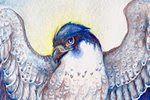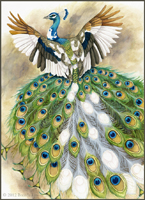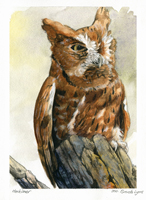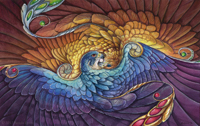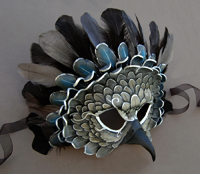At this point, I begin the detail on the salmon and trees. I use white instead of a mixture of green on the trees, as I will use glazes (thinned, translucent layers of paint) to bring the color in. Atlantic salmon have a lovely silvery shimmer, which is something the client wanted me to capture in this fish. When working small, you don't have to paint every single detail with sharp accuracy - sometimes less is more. An example of this is the scales. Simple dots are enough to give the illusion of glossy scales.

I also decided to add some variation to the water. Water is rarely 'blue', and often has shades of green and brown. Even putting glazes of green over blue will make the water look more natural, instead of artificial.
Now that most of the details have been painted, it's time to add the last figure - the fisherman. Instead of sketching him with paint, I use a white gel pen. These pens are perfect for sketching on acrylic, as they are water-soluble, and if you make a mistake, you can simply 'erase' with water. I also draw in the fishing line with this pen, as it is thinner and more fluid than any brush with paint.

Painting in the fisherman was the most tricky part, since on the feather he is only about an inch tall. Again, the same technique of 'less is more' can be used on the fisherman. By using bold shadows and highlights, he pops out. And delicate detail is unnecessary - it wouldn't show up well anyway.
After adding some last details to the trees and rocks, the feather is complete. The color and contrast is different from the progress shots because instead of photographing the final piece, I scanned it. Scanners will generally give you sharper detail and are not affected by the lighting of your room, which is why it is the preferred method for digitizing traditional artwork.


















